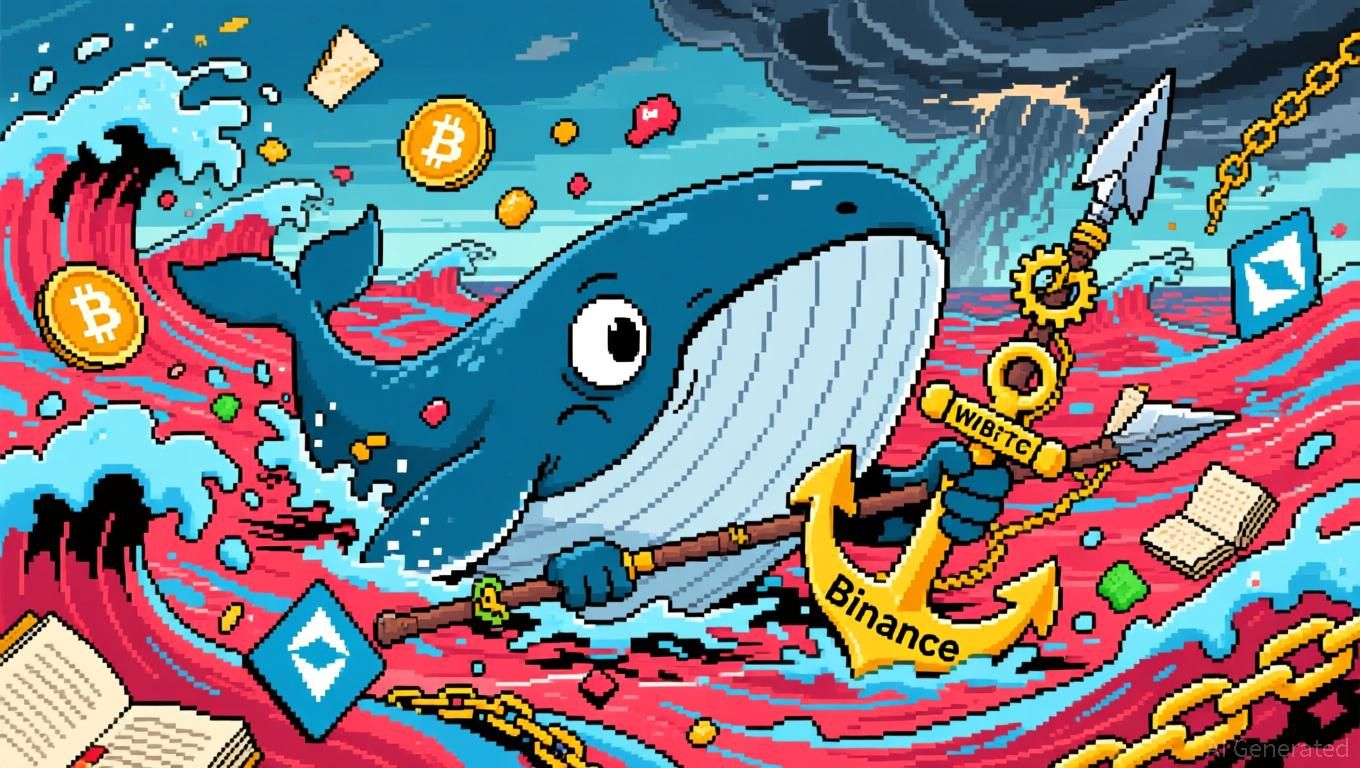Ethereum Updates: The Ongoing Bridge Debate—Balancing Centralized Authority and Decentralized Protection
- Vitalik Buterin warns of off-chain risks despite blockchain's security advancements, emphasizing centralized vulnerabilities in cross-chain bridges and L2 solutions. - Solana's Anatoly Yakovenko criticizes Ethereum L2s' permissioned multisig systems for undermining decentralization, proposing ZK-based Solana-Ethereum interoperability. - Sovereign Labs' Cem Özer advocates for STF-level rollup designs to isolate bridge risks, enabling flexible yet secure multi-bridge ecosystems. - The debate highlights ten
Blockchain Update: Vitalik Warns of Off-Chain Risks Despite On-Chain Security
Vitalik Buterin, one of Ethereum’s co-founders, has once again highlighted the dangers posed by off-chain vulnerabilities, even as blockchain systems advance. His comments arise as the crypto community continues to debate the safety of cross-chain bridges and layer-2 (L2) solutions—key components for scaling decentralized platforms, yet still controversial in terms of security.

Recent conversations between
Özer responded by emphasizing that the effectiveness of escape hatches—mechanisms for users to recover assets if a bridge fails—relies on the design of rollups. Sovereign Labs’ rollups implement forced transactions at the state transition function (STF) layer, which helps prevent censorship and lowers the risks tied to bridges. This method contains vulnerabilities to individual bridges, rather than putting the entire L2 network at risk. Özer maintained that having multiple bridges with different security approaches can coexist, offering users more choice without compromising protection, a perspective further detailed in the same article.
This ongoing debate has real-world consequences for
The conversation gained momentum within the community. Some questioned if STF-level enforcement would restrict user options, but Özer argued it actually increases user empowerment by distributing control. Others noted that Sovereign’s strategy confines risks to specific bridges, reducing the chance of widespread failures. These points reflect a broader industry push to streamline rollup frameworks while upholding strong security, as mentioned in the article.
As blockchain ecosystems grow, finding the right balance between innovation and risk management remains crucial. Vitalik’s caution about off-chain threats highlights the importance of thorough technical reviews and decentralized oversight in bridge development. The dialogue between Solana and Ethereum illustrates a maturing sector where interoperability and security must be carefully engineered to work together.
Disclaimer: The content of this article solely reflects the author's opinion and does not represent the platform in any capacity. This article is not intended to serve as a reference for making investment decisions.
You may also like
Ethereum News Update: The Dangers of Leverage: Crypto Whale Suffers $26 Million Loss Amid Market Decline
- A crypto whale lost $26.348M by partially liquidating 15x leveraged BTC and 3x leveraged ETH positions amid declining prices. - The whale's $250M portfolio faces $3.734M unrealized losses if liquidated, with a $65,436 WBTC liquidation threshold. - Broader market trends show $260.66M ETH ETF outflows and ETH/BTC prices below $2,800 and $87,000, worsening leveraged traders' risks. - A HyperLiquid user lost $4.07M from a 6x ETH long position, reflecting systemic leverage challenges as macroeconomic factors

Bitcoin Updates: U.S. Market Pessimism Contrasts with Asian Confidence as Bitcoin Drops Near $85,000
- Bitcoin's price fell to $85,000 in Nov 2025, down 7% in 24 hours and 20% monthly, driven by dormant wallet sales and bearish derivatives bets. - Surging sell pressure from inactive wallets and rebalanced derivatives toward puts highlight deteriorating market structure and liquidity. - Fed rate-cut uncertainty and regional divergences—U.S. bearishness vs. Asian buying—exacerbate volatility amid $565M in liquidations. - Analysts split on recovery: some see consolidation near $85K-$100K, others warn of a po

Aave News Today: Aave’s High-Return Application Offers a Solution to Inflation’s Impact on Savings
- Aave , a top DeFi lending protocol, launched a consumer savings app offering up to 9% APY, competing with traditional banks and fintech platforms. - The app targets mainstream users with zero minimum deposits, real-time compounding, and $1M balance protection, aiming to simplify DeFi accessibility. - While outperforming traditional savings rates, Aave's insurance transparency and security history raise concerns amid crypto's volatile trust landscape. - This move reflects DeFi's neobank trend, with high-y

The PENGU USDT Sell Alert: Is This a Red Flag or Simply a Market Adjustment?
- PENGU USDT's sell signal highlights concerns over structural risks in stablecoin-backed crypto strategies amid volatility and regulatory shifts. - The token's 28.5% decline since October 27, coupled with weak technical indicators, reflects broader fragility in algorithmic stablecoins and leveraged positions. - Growing institutional adoption of asset-backed alternatives like USDC contrasts with PENGU's speculative NFT-driven model, which lacks robust collateral or compliance. - While Fed policy easing may